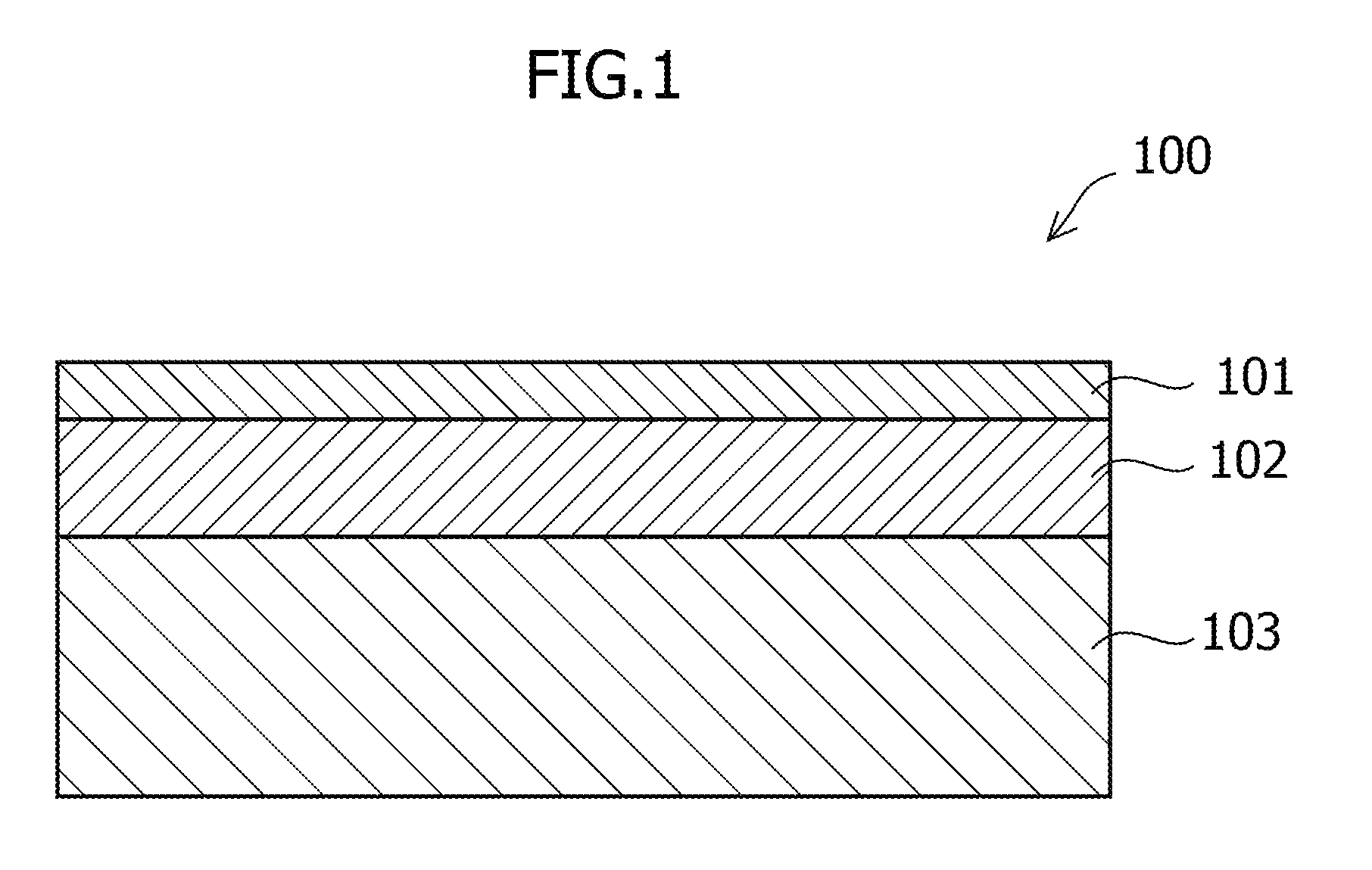Metal-base printed circuit board
a printed circuit board and metal-base technology, applied in printed circuit aspects, transportation and packaging, coatings, etc., can solve the problems of short circuit and decrease in insulation resistance, and achieve the effect of preventing the possibility of electrochemical migration
- Summary
- Abstract
- Description
- Claims
- Application Information
AI Technical Summary
Benefits of technology
Problems solved by technology
Method used
Image
Examples
production example 1
[0046]To 20 g of a bisphenol A epoxy resin main agent (Mitsubishi Chemical Corporation, 816B), 0.8 g of silica nanoparticles (AEROSIL A200, average particle diameter: 7 nm, particle diameters: 1 nm to 300 nm) were added with stirring, and then 40 g of an alumina micro filler (Admatechs AO-802, average particle diameter: 0.7 μm, particle diameters: 0.1 nm to 5 μm) was added with stirring. After the absence of coarse particles was visually confirmed, the silica nanoparticles and the alumina micro filler were dispersed by using a planetary centrifugal mixer (manufactured by THINKY). A dispersing process at a rotation speed of 2000 rpm was repeated five times for 2 minutes each. After the dispersing, 6 g of an amine-based curing agent, 4,4′-methylenebis(2-methylcyclohexanamine) (Mitsubishi Chemical Corporation, 113), was mixed with this resin mixture with manual stirring.
production example 2
[0047]An insulating resin layer composition was prepared in the same manner as in Production Example 1, except that, instead of the silica nanoparticles, 0.8 g of titania nanoparticles (Fuji Titanium Industry Co., Ltd., TAF-500, average particle diameter: 50 nm, particle diameters: 1 nm to 100 nm) were added with stirring.
2. Fabrication of Metal-Base Printed Circuit Boards
[0048]The insulating resin layer composition prepared in Production Example 1 was applied onto a copper foil (12 cm in length, 12 cm in width, and about 10 to 35 μm in thickness) to a film thickness of 100 μm. Then, the insulating resin layer composition was preliminarily cured by heating in a thermostatic chamber at 70° C. for 3 hours, and secondarily cured by further heating at 120° C. for 3 hours. After that, the copper foil was cut into a size of 4 cm in length and 4 cm in width, and an area on the copper foil surface was masked with a pressure-sensitive tape having a diameter of 1 cm. Then, the copper foil in ...
PUM
| Property | Measurement | Unit |
|---|---|---|
| average particle diameter | aaaaa | aaaaa |
| average particle diameter | aaaaa | aaaaa |
| thickness | aaaaa | aaaaa |
Abstract
Description
Claims
Application Information
 Login to View More
Login to View More - R&D
- Intellectual Property
- Life Sciences
- Materials
- Tech Scout
- Unparalleled Data Quality
- Higher Quality Content
- 60% Fewer Hallucinations
Browse by: Latest US Patents, China's latest patents, Technical Efficacy Thesaurus, Application Domain, Technology Topic, Popular Technical Reports.
© 2025 PatSnap. All rights reserved.Legal|Privacy policy|Modern Slavery Act Transparency Statement|Sitemap|About US| Contact US: help@patsnap.com



